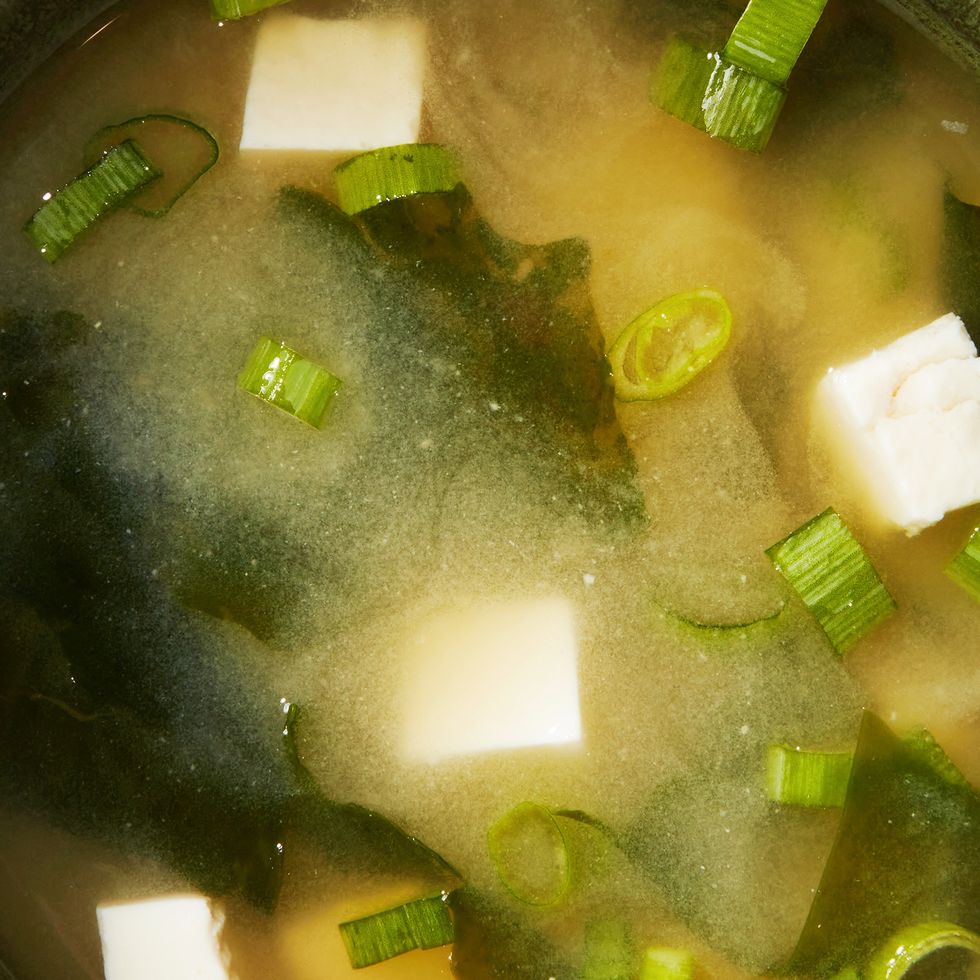Classic comfort food, miso soup is the bowl we turn to when we need something cozy and comforting yet light. It’s the perfect start to a meal or the most satisfying way to warm up on a cold day. If you’ve never made miso soup before, you may be surprised at how easy it is to make homemade. If you’re looking to try your hand at making this classic soup, keep reading on for all of our the best tips on making this winter staple:
All about the dashi:
Essentially, miso soup is just miso paste whisked into a dashi. Dashi is the Japanese word for stock—the most iconic type of dashi is made of kombu (dried kelp) and bonito flakes (smoked, dried tuna flakes). You can buy a powdered mix to make dashi, but if you’re able to get your hands on the real ingredients, you’ll have a more flavorful, intense stock.
But, as chef Yuji Haraguchi, owner of Yuji Ramen and Osakana in New York, will tell you, miso soup can be made with all kinds of stock. You can also sub out the bonito flakes in the classic dashi for any number of seafood, but his favorite is clams with red miso.
The miso paste:
There are many different types of miso pastes to explore. White miso—which we use here in our classic recipe—is lighter in color and sweeter. Red miso is darker and has a more intense salinity and umami flavor. One of Yuji’s favorite misos is barley miso, which is also dark, but adds an incredible earthiness. His favorite variations are using a quart of almond milk with kombu and root vegetables to create a very autumnal, creamy miso soup made with miso barley.
Once you buy your miso, use it to make countless other recipes, including our miso butter cod and a twist on an Italian classic, miso Bolognese.
Storage:
Miso soup is generally best enjoyed the day of, but if you have leftovers, store in an airtight container in the fridge for around 2 to 3 days.
Tried making this miso soup? Let us know how it came out in the comments below.

Classic comfort food, miso soup is the bowl we turn to when we need something cozy and comforting yet light. It’s the perfect start to a meal or the most satisfying way to warm up on a cold day. If you’ve never made miso soup before, you may be surprised at how easy it is to make homemade. If you’re looking to try your hand at making this classic soup, keep reading on for all of our the best tips on making this winter staple:
All about the dashi:
Essentially, miso soup is just miso paste whisked into a dashi. Dashi is the Japanese word for stock—the most iconic type of dashi is made of kombu (dried kelp) and bonito flakes (smoked, dried tuna flakes). You can buy a powdered mix to make dashi, but if you’re able to get your hands on the real ingredients, you’ll have a more flavorful, intense stock.
But, as chef Yuji Haraguchi, owner of Yuji Ramen and Osakana in New York, will tell you, miso soup can be made with all kinds of stock. You can also sub out the bonito flakes in the classic dashi for any number of seafood, but his favorite is clams with red miso.
The miso paste:
There are many different types of miso pastes to explore. White miso—which we use here in our classic recipe—is lighter in color and sweeter. Red miso is darker and has a more intense salinity and umami flavor. One of Yuji’s favorite misos is barley miso, which is also dark, but adds an incredible earthiness. His favorite variations are using a quart of almond milk with kombu and root vegetables to create a very autumnal, creamy miso soup made with miso barley.
Once you buy your miso, use it to make countless other recipes, including our miso butter cod and a twist on an Italian classic, miso Bolognese.
Storage:
Miso soup is generally best enjoyed the day of, but if you have leftovers, store in an airtight container in the fridge for around 2 to 3 days.
Tried making this miso soup? Let us know how it came out in the comments below.
- Yields:
-
4
serving(s)
- Prep Time:
- 5 mins
- Total Time:
- 35 mins
- Cal/Serv:
- 84
Directions
-
- Step 1
In a large pot over medium heat, bring kombu and 6 cups water to a simmer. Remove kombu as soon as the water starts to simmer or an instant-read thermometer registers 150º. Bring stock to a boil and add bonito flakes. Reduce heat to medium-low and bring to a simmer. Cook until stock is infused, 10 to 15 minutes. Strain through a fine-mesh sieve into a medium bowl, pressing on solids to release stock.
- Step 2Return dashi to same pot and bring to a simmer over medium heat. Whisk in miso until dissolved, then stir in scallions and wakame.
- Step 3Divide tofu among bowls. Pour soup over.
- Step 1


















Leave a Reply